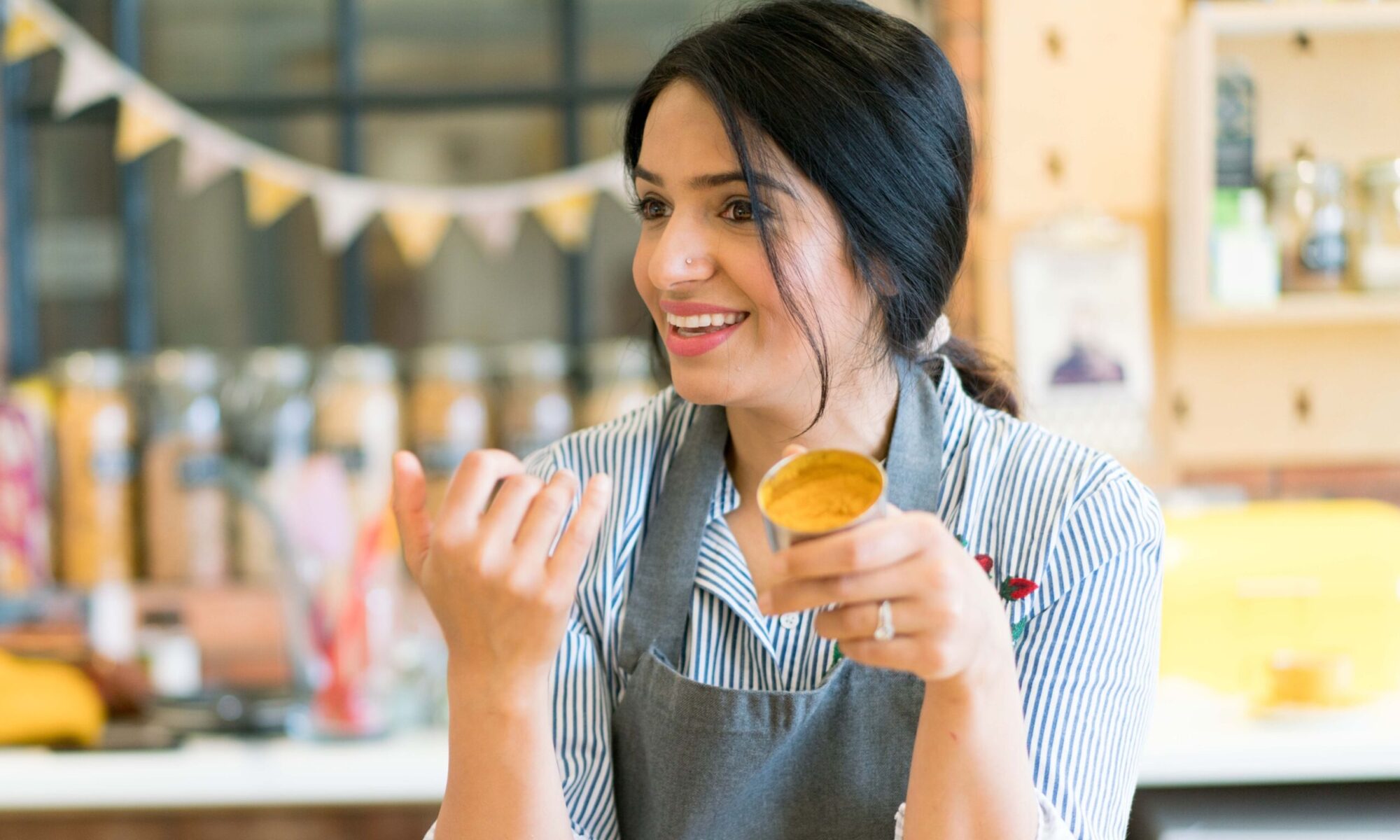I can’t count the number of times I have cooked this dish; yet every time I sit down to eat it, I still get a tiny bit excited. It’s because it never disappoints. It is for that reason that I decided to teach my Punjabi Murgh Masala at my third LIVE COOKERY CLASS this afternoon. I have also decided that it deserves to be flagged under my “Spice Club Staples” recipe collection because once you have nailed how to make the masala part of this recipe, you can actually use it as a base for countless recipes, so tis a great go-to in our current climate.
The masala is also fantastic to cook in bulk, store in a jar, top with a little bit of oil & keep in the fridge. When you come home and fancy a delicious chicken/paneer/mixed veg/fish prawn masala…you know it will be ready in just a matter of minutes.

Sure you can reach for an expensive jar of a pre-made “curry” paste. But why would you when you know the fresh masala you have made from scratch in your own kitchen is (so much) tastier, has no additives/colourings, is more nutritious and not to mention cheaper. Okay my sales pitch is officially over. Now you have to try it for yourselves and let me know your thoughts!
If you missed the live cookery class but want to catch up and watch, you can do so by clicking here. Also, if you have any dish suggestions for next week’s class, comment below or drop me a message on Instagram or Facebook. I would love to hear from you!


Punjabi Murgh Masala (Chicken Curry)
Ingredients
For the chicken marinade:
- 500 g skinned boneless chicken thighs cut into small pieces
- 2 tbsp yoghurt Plain/Greek works (a full fat type is preferred)
- 2 tbsp oil
- 1 tsp salt
- 3/4 tsp garam masala
For the masala:
- 5-7 tbsp oil or ghee, or a combination of both
- 3 bay leaves optional
- 3 cloves optional
- 3 green cardamom pods optional
- 1 black cardamom optional
- 2 medium onions (approx 175g) very finely diced
- 1 tsp salt or according to taste
- 3 garlic cloves grated
- 2 " ginger grated
- 5 tbsp tomato passata/blitzed plum tomatoes
- 1/2 tsp double concentrate tomato puree, optional
- 1-2 chillies finely chopped, (or you can use 1/4 -1/2 tsp chilli powder)
- 1 tsp garam masala
- 1 1/2 tsp coriander powder
- 1 heaped tsp paprika
- 2 tsp sun dried fenugreek leaves/kasuri methi, ground into a powder, optional
- Handful fresh coriander with stems finely chopped
You will also need:
- 1 x Foil lined oven tray
- Jug of water (room temp is fine)
- Pestle & Mortar if you have one. Don't worry if not!
Instructions
- Pre-heat your grill at the maximum temperature setting. Place all "marinade" ingredients into a bowl and mix together. Place the marinated chicken on a foil lined oven tray and spread out. Grill for approximately 10 minutes or until fully cooked (the chicken should be white all the way through and have a slight golden char all over). Remove from grill and keep aside.
- Heat the oil/ghee in a pan. Using a pestle & mortar, coarsely crush the cloves and cardamoms until coarsely ground. Then add to the oil along with the bay leaves. Immediately after, add the chopped onions along with 1 tsp salt. Cook for 4-5 minutes on medium heat until soft and translucent.
- Now add the grated garlic and ginger and mix. Continue to cook for a further 3-4 minutes until completely golden brown.
- At this point, add the tomato passata as well as the puree and green chilli to the pan and stir for a a minute.
- Now, reduce the heat. Then add the garam masala, coriander powder and paprika and mix well. Cook for a minute. When you see the oil begin to separate from the masala paste at the edges, add the grilled chicken. Add approximately ¼ cup water and bring to a boil. Reduce heat slightly, place a lid on the pan and allow to simmer for 6-8 minutes.
- Finish with the ground, dried fenugreek leaves and fresh coriander. Allow to simmer for a further 2-3 minutes.
- If you like your curry to be even more saucier, you can add a little more water (you may need to adjust the seasoning slightly if you do this)
- Taste for salt and chilli and adjust accordingly.










